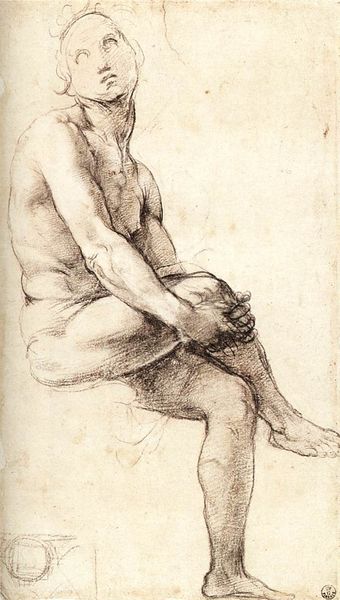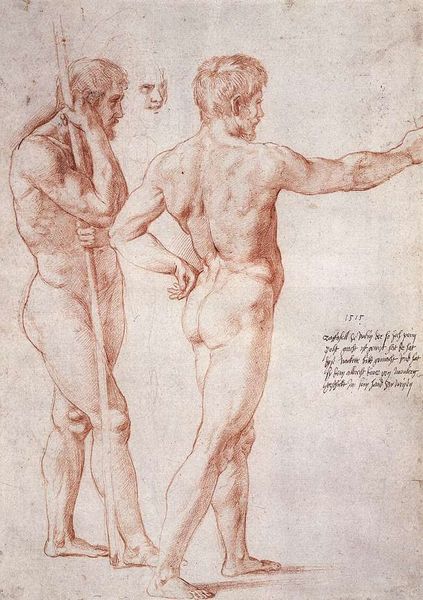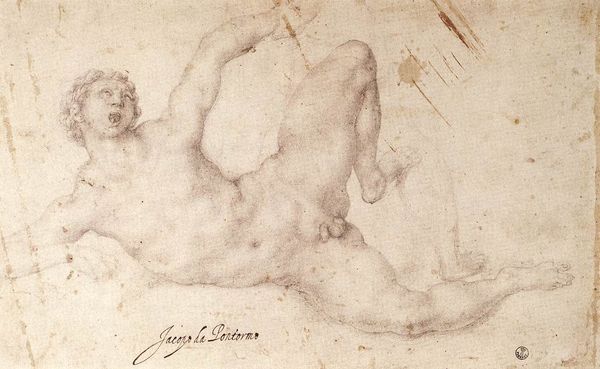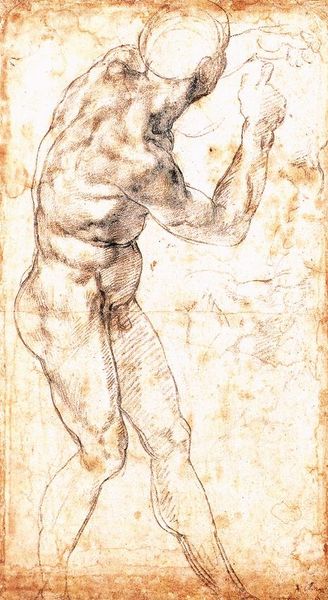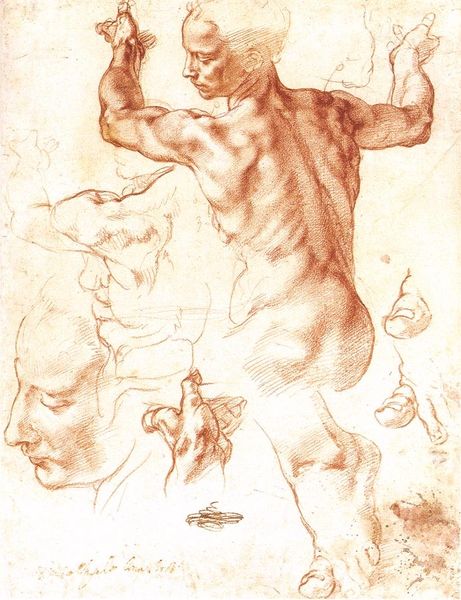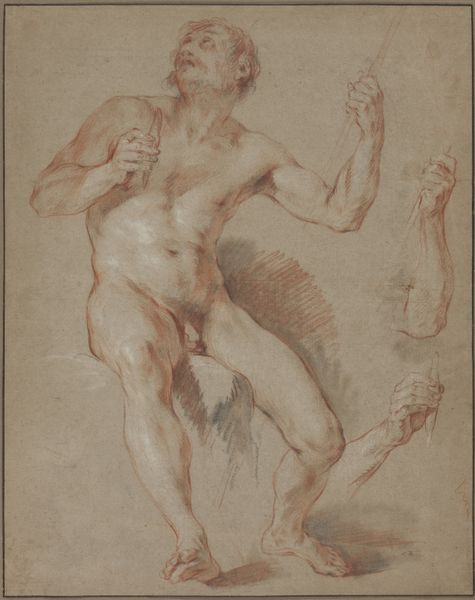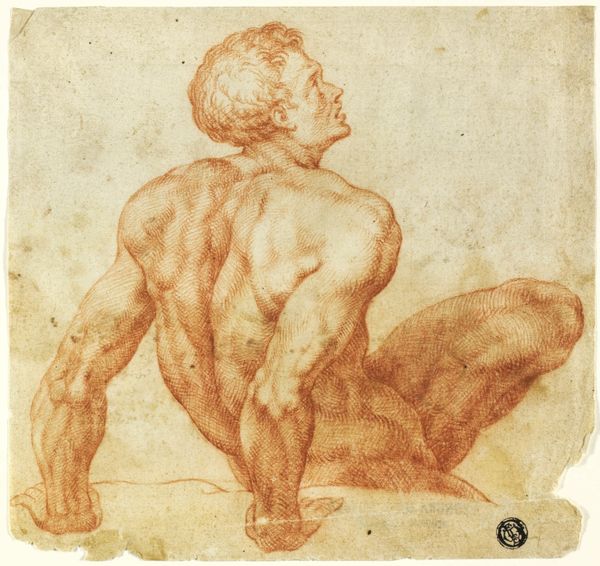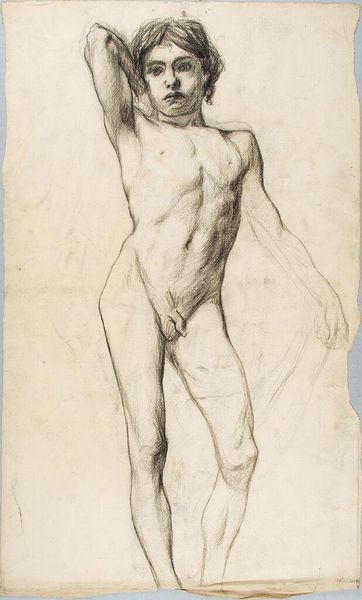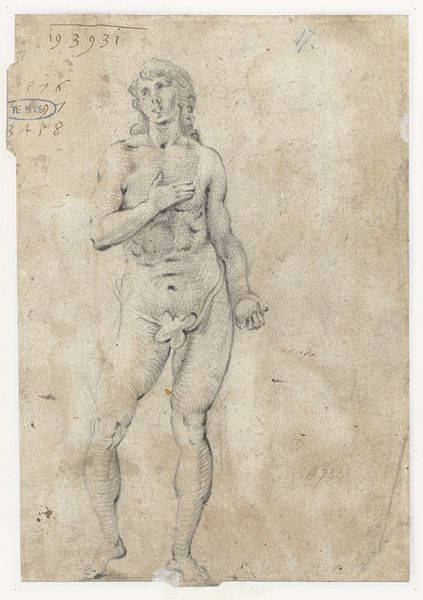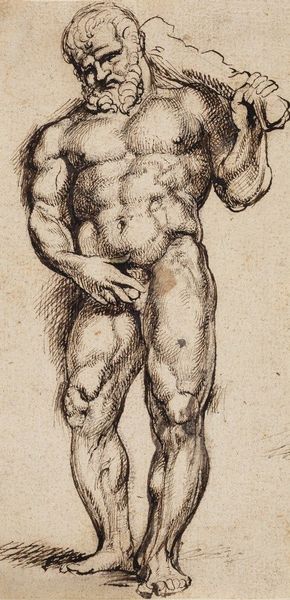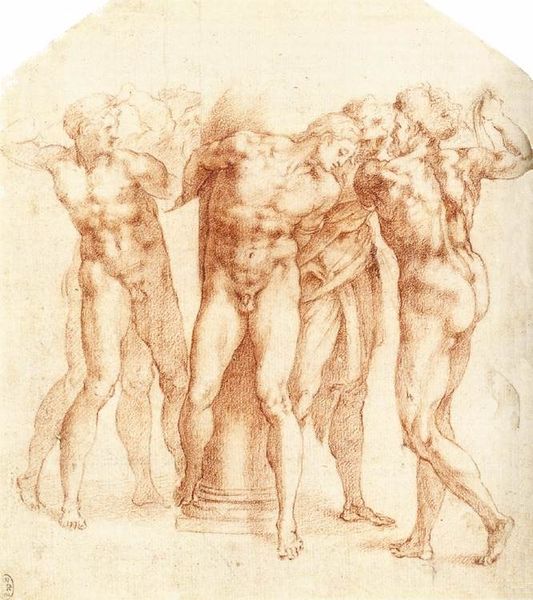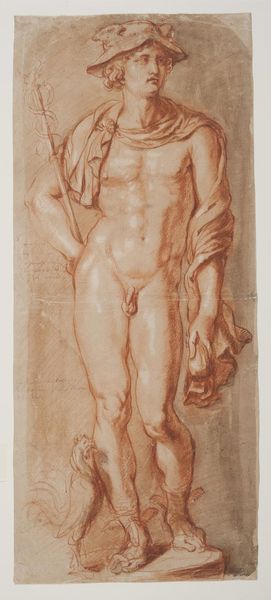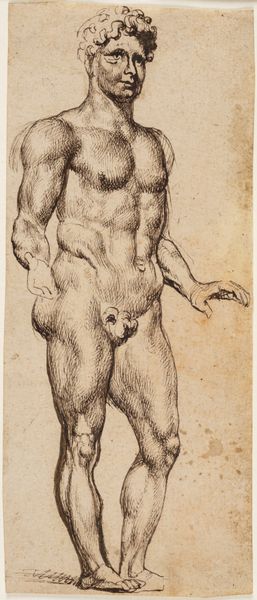
drawing, pen
#
portrait
#
drawing
#
charcoal drawing
#
mannerism
#
figuration
#
charcoal art
#
portrait reference
#
human
#
pen
#
portrait drawing
#
history-painting
#
academic-art
#
portrait art
#
male-nude
#
christ
Copyright: Public domain
Curator: Here we have Jacopo Pontormo’s “Christ Seated, as a Nude Figure” rendered in pen and charcoal around 1526. It’s currently held in the Uffizi Gallery, in Florence. Editor: It has this somber feel, almost melancholic. The red chalk gives it warmth, but the slumped posture and closed eyes communicate resignation, a weariness of sorts. Curator: Absolutely. The materiality, specifically the chalk, is crucial here. It allows for incredibly subtle tonal gradations and delicate linework that capture the soft modeling of the figure. Look at how Pontormo uses hatching to define form and shadow, creating a dynamic sense of volume. Editor: Yet it's a Christ devoid of triumph, or even of narrative urgency. We're used to seeing the Passion represented with theatrical agony, and this drawing invites reflection on themes of male vulnerability. I would consider how that choice perhaps allows a deeper, more internal sense of Christ's suffering to manifest. Curator: That's precisely where its Mannerist qualities shine, a move away from Renaissance idealism. Instead of striving for perfect anatomical correctness, there is slight elongation and distortion in the figure's proportions to achieve expressive and emotional effect. It really demonstrates the stylistic dynamism that permeated Florentine art circles during this period. Editor: I also think about the absence of context. Is this Christ before, during, or after the crucifixion? He's presented raw, unidealized, vulnerable... It forces a more personal engagement than typical representations allow. This lack of clarity is quite subversive given its overt subject matter, as it seems to question institutional control over his likeness. Curator: True, yet to understand the work fully, we also have to consider the artistic dialogue within which Pontormo was operating, its conscious play with anatomical ideals of the time. Editor: It is a truly humanistic and compelling piece—both artistically daring and historically relevant—in its challenging of those ideals, whether those pertain to politics or the body. Curator: Indeed, I hope that analysis will have deepened the appreciation of it as more than a drawing. Editor: Agreed, It invites a consideration of the individual's humanity when the narrative has, for so long, focused primarily on the deity.
Comments
No comments
Be the first to comment and join the conversation on the ultimate creative platform.
